Standard lilac: description and subtleties of care

Few people do not know the delicate aroma of blooming lilacs. In its usual form, it is a lush flowering shrub. It looks beautiful in the form of a tree - standard lilac. It has its own characteristics of cultivation and care, but in general, it is within the power of every gardener to form it.

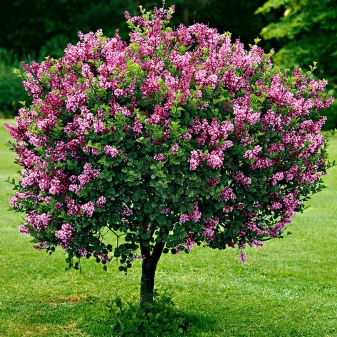
Peculiarities
Various varieties of lilacs amaze with their variety and many shades: delicate white, bright red, rich ink flowers delight the eye. But not all varieties are easy to care for, so a beautiful picture can remain a dream. The solution to the problem is the standard lilac. A magnificent tree will become a decoration of the garden and is relatively undemanding to care for. It has a number of advantages.
- A definite plus of lilacs is dense dark green foliage. Even a tree that is not flowering looks beautiful.
- The inflorescence consists of many small flowers, which can be simple or double. The color scheme is very diverse and depends on the selected variety. Light blue, red, burgundy and white flowers are more common.
- A tree formed on a trunk is more compact than a sprawling shrub, and looks neat and refined.
- It is much easier to care for a tree than for a shrub, which strives to grow throughout the site. By grafting a tree with different types of lilacs, you can grow an exclusive specimen.
- Lilac leaves retain dust very well.
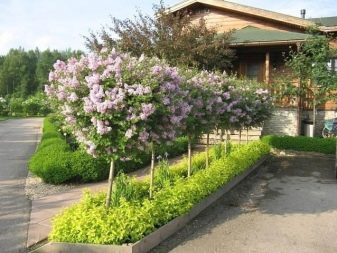
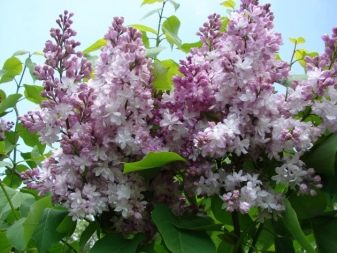
Popular varieties
- "Meyer" - a small neat tree that grows rather slowly. The flowers have a burgundy pink hue and a sweetish scent. Lilacs of this variety pleases with their flowering twice - in May and June. The leaves retain their charm until autumn, only by the end of September they begin to wither. "Meyer" looks great in group plantings.
- "Ludwig Shpet" has a gorgeous spreading crown and has more than one trunk. It can reach a height of 4 m, and the width of the crown is about 3 m or more. Large inflorescences delight with their crimson-purple color in May-June.
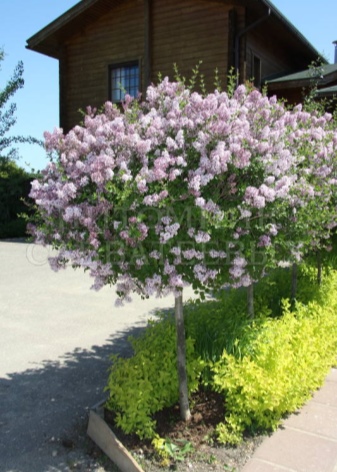
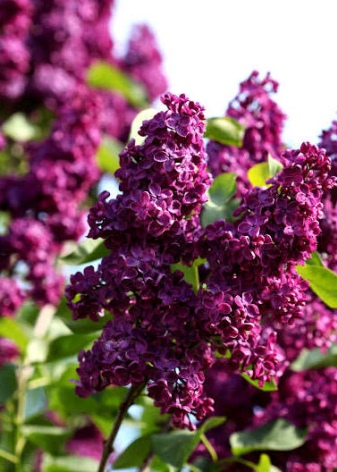
- Miss Canada has a spherical crown up to 2 m wide. The trunk is no more than 2.5 m in height, it grows quickly enough. The bright pink blossoms are composed of many small flowers that adorn the garden for two months. This variety is not afraid of frost and insects.
- Michelle Buchner differs in double pinkish-bluish flowers and elongated emerald-colored leaves. This is a variety of contrasts: it has a small bush size and at the same time has large inflorescences - up to 30 cm in length.
- "Madame Lemoine" reaches a height of 3.5 m. Light green leaves during flowering are lost in white inflorescences.
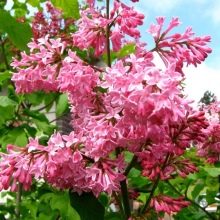
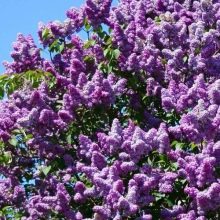

- "Beauty of Moscow" pleases with a long flowering from April to the end of June. Mature trees have a dense, rich crown of rich green color. And the pink flowers of this variety smell like small roses, and in appearance, the double flowers resemble rosebuds.
- "Sensation" - a medium-sized variety, the crown width is no more than 1.5 m. The tree grows only 40 cm per year, which is rather slow. But unusually beautiful inflorescences with bright purple flowers in a white border delight the eye until September.
- "Akkubifolia" also has purple flowers, but in a softer tone than Sensation. The aroma of "Akkubifolia" is very delicate, and the leaves are not uniform in color. In the total mass, the crown looks as if the artist's hand in places on the green has applied strokes of light yellow paint.

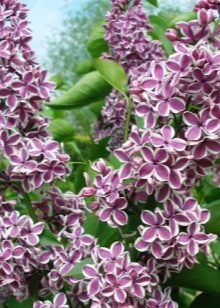

- General Pershing - a tall tree (about 3-4 m), resistant to diseases and sudden changes in temperature. In early summer, it is covered with purple-pink double flowers.
- "Sky of Moscow" is able to change the color of inflorescences: at first they are dark purple, almost inky, and by the end of flowering, which lasts about 3 months, they acquire a lilac color. It reaches a height of 2.7 m. The color of the foliage is dark green.
- Charles Jolie - a fairly tall tree, it can grow up to 4 m. The peculiarity of this variety is in its inflorescences, which consist of double purple flowers and have a pyramidal shape. Over the course of a year, the tree becomes 30 cm taller.

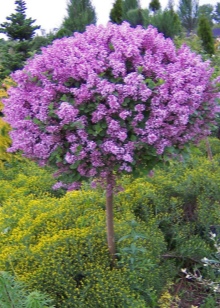

Landing
The standard grafted lilac is quite undemanding to care for, but it has its own nuances: it must be properly planted in the right place and follow some rules.
Disembarkation time and place:
- a suitable period for planting lilacs is late July or early August, young seedlings will have time to take root and gain strength before the onset of frost;
- the best time for planting is evening, and if it rains, it is even better, so it will be easier for the seedling to adapt;
- standard lilac is not very whimsical to the composition of the soil, but it will thank you with a lush flowering, if you plant it in loamy soil, it grows worse in acidic soils, it also does not like the close location of groundwater;
- in addition to the composition of the soil, it is important that it is sufficiently moist and loose, it is also worth applying fertilizers to saturate the earth with useful substances;
- it is better to choose a sunny place for a tree, since it does not like shade.


The key to success in growing lilacs is choosing a good seedling. When buying, it is important to pay attention to the root system, it must be developed and have branches. The rhizome should be firm and not brittle. It is worth giving preference to a two-year-old plant with a formed trunk height of about 60 cm. Such a seedling has high chances to quickly take root and grow.
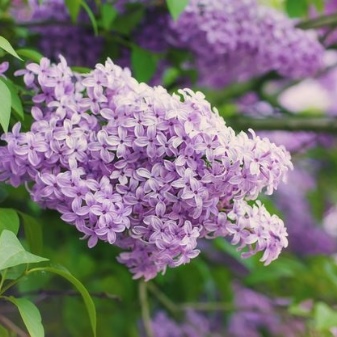
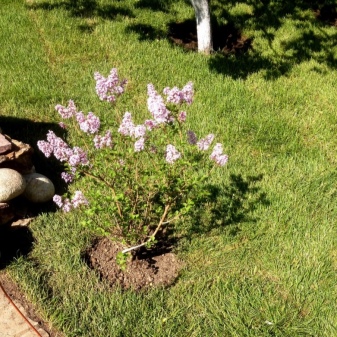
Disembarkation step by step:
- first you need to prepare a hole, its size needs to be made under the root system of the seedling;
- to protect a young tree from stagnant water, expanded clay or pieces of old broken clay pots are placed in the pit, they will act as drainage;
- humus is laid on top of the drainage - a source of nutrients for the plant;
- after the preparatory work has been completed, place a seedling in the pit and sprinkle it with earth so that the root neck remains 3 cm above the surface;
- the soil is tamped around the trunk so that the tree is securely fixed, sprinkle with sawdust on top and cover with a dark film, then the moisture will evaporate more slowly and the seedling will be comfortable;
- when planting several trees in a row, it is necessary to maintain a distance of 1.5 m so that in the future they do not fight for nutrients and do not interfere with each other;
- it is also worth digging slate sheets into the ground between them, this will help the roots of neighboring trees not to intertwine;
- at the end of planting, the seedlings need to be watered;
- despite the fact that lilac loves light, it is better to shade newly planted young seedlings for 2-3 days so that they can adapt.
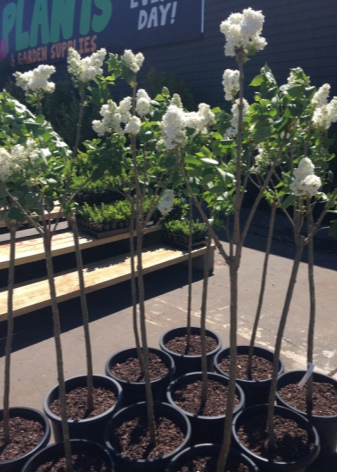
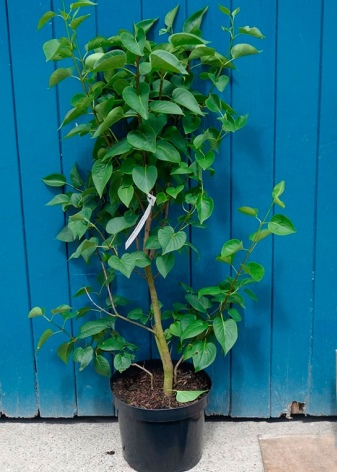
Care
The main thing for the standard lilac is moisture and useful trace elements. Water the plant carefully so as not to flood it. If the weather is hot, watering is carried out when the earthen clod around the trunk dries, in other weather, watering is moderate so that the roots do not rot.
The type of fertilizer depends on the season: nitrogen is required in early spring, then phosphorus is added to ensure the laying of flowers, in the summer it should be fed with organic fertilizers, but this must be done once every two years.


The scheme of forming a standard lilac:
- in order for the standard lilac tree to look beautiful, its crown must be formed by cutting off excess shoots;
- the first three years of life, basal shoots are not formed, then, when they begin to appear, they need to be periodically cut off, and lateral buds are also removed so that the lilac remains decorative;
- in order to grow a tree healthy and strong, you need to remove dried inflorescences, also after the lilac has faded, they prune old shoots and flowers;
- it is important for a young tree to gain strength in the first years of growth, therefore, during this period, part of the inflorescences is cut off - about half, and after a few years the lilac will thank with abundant flowering;
- shoots cannot be simply broken off, they must be cut off with garden shears, which must be well sharpened.


Better for the formation of a trunk, special varieties are suitable, however, if you wish, you can form a tree from ordinary lilacs.
- In the first year after planting the seedling, new shoots are not cut off. The seedling is well watered and fed with organic and mineral fertilizers.
- The next year, they examine the shoots and choose the strongest one that can eventually become a stem. It is trimmed slightly above a pair of buds, one of which is pinched.
- The future trunk is tied to a peg, then throughout the year they continue to water and feed abundantly. The resulting overgrowth is not removed.
- In the third year, at the beginning of spring, young shoots are cut off. The kidneys are removed almost all, except for the upper ones, which need to be left five. Above the topmost, the trunk is cut off and one kidney is removed.
- During this period, a young tree needs a lot of moisture, so the ground around is sprinkled with sawdust and continue to be watered well. You can also graft the plant at this time.
- The next year (fourth), at the beginning of spring, shoots are removed, and at the end, weak branches are cut off. The remaining strong shoots are cut to the second buds, thanks to this, a dense crown will form in the future.
- In subsequent years, the spherical crown is simply maintained by pruning the branches. The tree is watered and fed as usual.

To vaccinate or not?
Grafting allows you to preserve rare varieties brought from abroad or recently bred. It also helps in cases when you need to get an ideal tree in a short time: beautiful, of the desired height and crown width.
Such trees are a decoration of the garden, but they are very demanding to care for. Also, difficulties may arise due to the choice of rootstock.
- The most economical, but also less reliable way is to use privet bush as a rootstock. This plant is brought from southern places and is not accustomed to cold winters, it can freeze and die, and then all the work will be lost.
- Hungarian lilacs reproduce well both by cuttings and seeds. It grows quickly, and vaccinations take root well on it. However, this is also its minus - with the rapid survival of the scion, a strong fusion with the stock does not occur. For several years, the tree can delight with a beautiful view, but as a result, heavy sleet or a harsh wind can disrupt the connection between the scion and the stock. As a result, the tree will return to its original version, that is, it will be an ordinary Hungarian lilac.
- The most advantageous option is to use common lilac as a rootstock. The graft firmly grows together with the stock and the wind is not afraid of it. However, you need to be prepared to fight the overgrowth, as it can clog the grafted shoot. It is better to mark it with paint and cut off the excess in time. But if the varietal shoot is damaged and dies, the lilac will again become common.


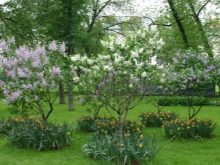
The disadvantages of unvaccinated lilacs are:
- the complexity of the formation of the bush and the spreading of the crown;
- a long time from planting to the beginning of flowering;
- high price.
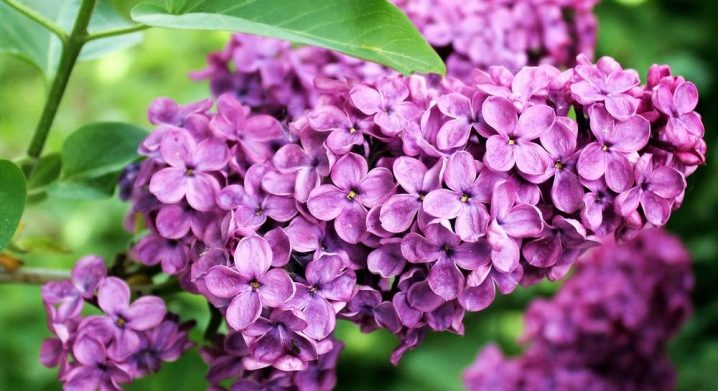
Advantages:
- such plants have a long lifespan - there are known specimens of about 200 years old;
- can recover with the help of overgrowth, since rebirth does not threaten her;
- modern breeding methods help to reduce the cost of seedlings.

For information on how to care for the standard lilac, see the next video.



































































The comment was sent successfully.